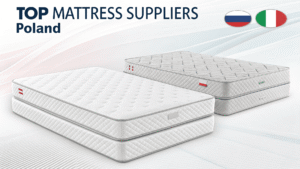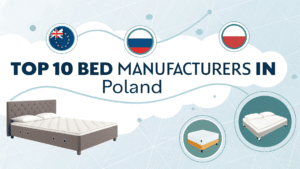What type of padding is used in bouclé beds?
You’ve seen bouclé beds everywhere—from showrooms to Pinterest boards. But what really makes a bouclé bed comfortable, durable, and ready for cross-border shipping? It’s not just the fabric—it’s the padding inside.
The most common padding used in bouclé beds is high-density polyurethane foam, sometimes layered with fiberfill or polyester cotton for a fuller, plush look.

Many mid-sized furniture retailers — especially those like Jack Siva in Canada, who focus on upholstered beds and custom fabrics — are asking the same question: how do we choose the right padding for bouclé beds that ship well, look great, and perform under pressure?
If you’re a retailer like Jack Siva in Canada, you’re not just picking fabric—you’re choosing how your bed holds shape, ships without damage, and avoids bad reviews. Let’s unpack how different types of padding impact product performance, customer satisfaction, and B2B profitability.
Is bouclé fabric good for beds?
Bouclé looks soft and elegant—but is it practical for daily use?
Yes, bouclé is good for beds. It's thick, holds its shape, and doesn't pill easily. When paired with the right padding, it offers great durability and comfort for long-term use.

Bouclé Fabric Is More Than Just a Trend
In 2025, bouclé is still a top fabric choice, especially in mid- to high-end markets like Canada and Europe. But what makes it perform well over time? It’s how it interacts with the inner materials. A thin or unstable foam makes even the best fabric look cheap. That’s why pairing bouclé with quality padding—especially high-resilience types—is essential for maintaining shape and appearance.
Some fabrics stretch or wrinkle. Bouclé is resilient, but it needs support underneath. That support comes from the padding layer.
What kind of foam is used inside bouclé upholstered beds?
You can’t see it in pictures, but foam type makes or breaks product quality.
Most bouclé beds use high-density poly-foam for internal padding. This foam resists compression, bounces back quickly, and holds up during vacuum packaging.

What Makes Poly-Foam Ideal?
| Foam Type | Compression Resistance | Recovery After Shipping | Cost | Comfort |
|---|---|---|---|---|
| Standard PU Foam | Low | Poor | Low | Soft |
| High-Density PU Foam | High | Excellent | Mid | Balanced |
| Memory Foam | Moderate | Slow recovery | High | Premium |
| Fiber Padding Only | Very Low | Poor | Low | Visual only |
High-density foam is the industry standard for a reason. It maintains structure, supports bouclé’s rounded silhouette, and doesn’t collapse in shipping like soft foam or fiber-only builds.
Is high-resilience foam better than standard PU for bouclé bed padding?
Clients love the look. But will the bed hold up after six months of use?
Yes, high-resilience (HR) foam performs better than standard PU for bouclé beds. It holds structure, supports fabric shape, and keeps headboards looking full.

Why HR Foam is Worth the Cost
HR foam rebounds faster after pressure. This means fewer customer complaints about dents, misshaped corners, or sagging edges. If you're exporting or vacuum-packing bouclé beds, HR foam makes sure the product bounces back on arrival.
Even better—HR foam maintains appearance in lifestyle photography. That matters for e-commerce sellers using product images to drive conversion.
Does the type of padding affect vacuum packaging for bouclé beds?
If you're shipping to Canada or Europe, this question decides if your margins hold.
Yes, padding type significantly affects vacuum packaging results. Low-density foam or cheap fillers often fail to recover fully after shipping.

Bounce-Back Ability Defines Post-Shipping Quality
Retailers like Jack often ship overseas. Compression saves space, but poor padding can cost sales. Here’s how different materials react:
| Padding Material | Shipping Recovery | Risk of Deformation |
|---|---|---|
| HR Foam | Excellent | Low |
| Standard PU Foam | Moderate | Medium |
| Fiber Fill Only | Poor | High |
| Memory Foam | Slow Recovery | High (asymmetric) |
We recommend dual-layer padding: a firm base with a soft top layer. It balances visual volume with real structure. This combo performs best in vacuum packs.
What padding thickness is recommended for bouclé bed headboards?
Thickness defines the silhouette—and the experience of leaning back at night.
Recommended padding thickness for bouclé headboards is between 3 to 5 cm. It provides comfort without adding bulk or causing packaging issues.

Striking the Right Balance
If the padding is too thin, bouclé may wrinkle. Too thick, and the headboard looks bulky or exceeds box limits. In cold markets, customers also prefer warmth and softness.
We’ve tested a 3cm HR foam base + 1cm fiberfill layer—it delivers that ‘hotel bed’ look while staying lean enough for shipping.
Which padding materials help reduce complaint rates in upholstered beds?
Returns hurt profits. Let's prevent them before they happen.
HR foam layered with fiberfill reduces complaints by maintaining shape and visual appeal. Customers rarely complain about comfort—they complain about “it doesn’t look like the photos.”

Complaints We’ve Heard (and Solved)
| Complaint Type | Root Cause | Solution |
|---|---|---|
| “It looks deflated” | Cheap foam, poor bounce-back | Use high-resilience foam |
| “The headboard is uneven” | Memory foam asymmetric recovery | Avoid memory foam in structure |
| “Wrinkled when unboxed” | Not enough surface fiber padding | Add fiberfill for plumpness |
These are real-world cases. And small changes to padding can make a big impact on reviews.
Is soft or firm foam padding better for bouclé beds in colder markets?
Canada wants comfort—but without compromise on structure.
A layered combo of firm base + soft top works best in cold climates. Soft enough for comfort, firm enough for shape.

Understanding Customer Expectations
Cold markets prefer “cozy and soft.” But pure soft foam sags over time. I recommend a base of HR foam to prevent drooping, topped with 1-2 cm of PP fiberfill. This setup resists low-temp compression and provides warmth without slouching.
This also prevents common winter issues like static cling or fabric bunching, both of which can come from cheap fill choices.
How does padding choice affect bouclé fabric lifespan and wear?
Padding and fabric work together—bad foam leads to visible wear faster.
Good padding extends bouclé fabric life by reducing friction, bunching, and stress points. It holds the fabric in place and resists wrinkles.

Structure Preserves Surface
Bouclé is looped yarn. Loose areas invite snags, pilling, and uneven wear. When the foam underneath collapses, the fabric gets loose. That’s when customers start noticing.
To protect fabric life, I suggest high-density base foam, at least 3cm thick, with an optional surface layer to give bounce. This combo reduces pull, stretch, and corner sagging—especially important for beds in high-traffic homes.
Can memory foam be used in bouclé beds without causing deformation?
Memory foam is premium. But does it behave?
Not ideal. Memory foam can deform during shipping and cause asymmetry in bed frames. It’s better used in mattresses than headboards.

Looks Matter as Much as Feel
We tested memory foam in several headboards. During vacuum packing, one side often compressed more than the other. Once opened, the asymmetry stayed for weeks.
If your clients care about showroom appearance or lifestyle photos, avoid memory foam unless you can control every aspect of shipping and setup.
How should padding be layered in bouclé beds for optimal shape retention?
The answer isn’t just foam—it’s layers.
Use a 3-layer structure: HR base + soft middle + fiber top for best shape retention. This prevents wrinkles, adds volume, and handles compression well.

The Ideal Padding Structure
| Layer | Material | Function |
|---|---|---|
| Base Layer | HR Foam (3cm) | Support, structure |
| Middle Layer | Soft PU (1cm) | Comfort, softness |
| Top Layer | PP fiberfill (0.5cm) | Visual volume, wrinkle-free |
This structure works well for retail display, photography, and export. It keeps the bed looking new, even after long warehouse storage or shipping across continents.
Conclusion
For bouclé beds to perform well in both looks and logistics, padding matters just as much as the fabric. The right internal build reduces complaints, supports marketing photos, and delivers comfort that lasts.




